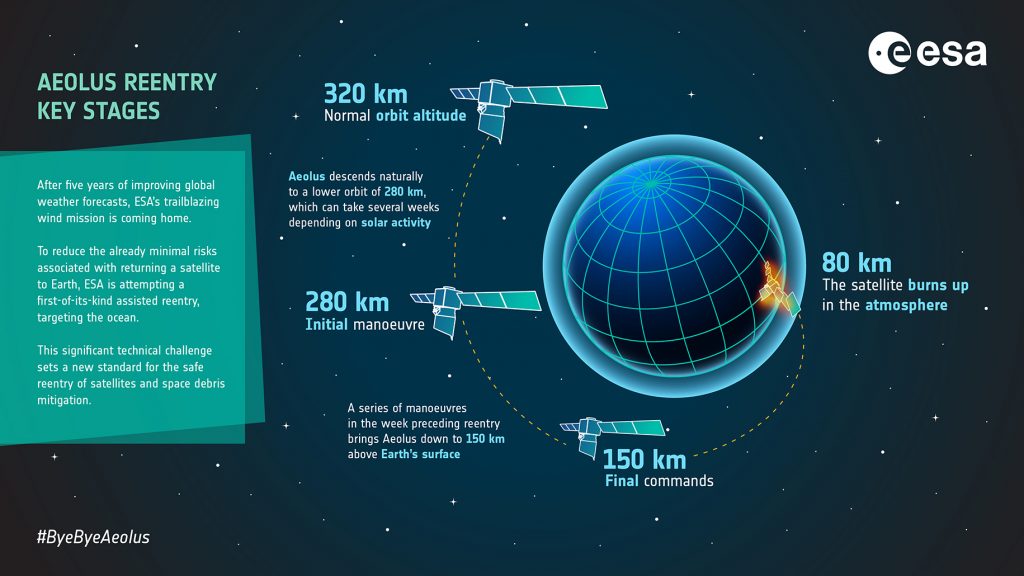It’s a story with all the elements. Our fiery Sun has been making life more complicated for teams attempting to guide ESA’s wind mission as it falls back to Earth, targeting any surviving debris at the sea.
Frequent solar storms, like flares and coronal mass ejections, have an impact on Earth’s infrastructure; from power grids on Earth’s surface to satellites in orbit and even missions flying across the Solar System.

When it comes to flying missions at low altitudes around Earth, solar storms increase the density of our planet’s upper atmosphere. Satellites flying through this ‘thick’ air lose energy and begin to fall, requiring operators on Earth to frequently manoeuvre their satellites, firing their thrusters so they can climb back up to their working altitude.
More manoeuvres mean more fuel. So, lots of space weather activity can even mean shortening a mission’s life.
For Aeolus, high levels of solar activity have had an impact throughout the atmosphere-grazing satellite’s life, which has required several manoeuvres to keep it up in orbit and monitoring Earth’s wind like no mission before.

In recent months at ESA’s mission control, engineers and experts in space debris and flight dynamics have been planning a complex set of manoeuvres to use Aeolus’s final fuel reserves to guide it as it falls. The Sun has been working against them, however, making it difficult to predict the exact timeline for the reentry.
The wind mission’s fall has been steadily speeding up, and the dates keep creeping forward as the Sun continues to hurry its return to Earth.

As we get closer to the start of critical manoeuvres, these dates have finally settled, with the first reentry commands ‘executed’ on Monday 24 July and the last on the following Friday.
Follow @esaoperations and @ESA_Aeolus for more updates on this attempted reentry, and of course, here on the Rocket Science blog.

Discussion: no comments